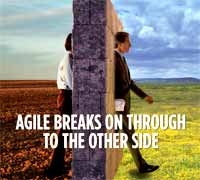There is extensive overlap between the new EJB 3.0 specification and the mature JDO 2.0. Compare and contrast EJB''s substantial but essential changes to existing features in JDO.

After an era of benign neglect, enterprise instant messaging is finally winning IT’s grudging acceptance.

A growing number of project managers, technical architects, and software developers are starting to see the benefits of highly iterative and incremental development.
Controls and visibility are essential for monitoring and managing applications. Learn a best practice for employing design patterns that combine applications with JMX and policies.

Software subscription offers benefits over traditional licensing models, but software decision makers worry about their data living on someone else’s servers. Part two of a two-part series.
Will the trend of increasing power and ease of use in development tools continue? See why basing Web application architectures on Java technologies is a smart business decision.

Visual models can reduce the effort and cost of the entire application lifecycle when the size and complexity of the app justifies using them.
Both major platforms push Web services as a means of integrating applications across platforms. Check out another alternative that tightly integrates Microsoft code with Java apps.
Discover the many security services built into the ESB technology.
Organizations adopt coding standards to ensure the delivery of reliable applications. See how standards can help reduce time for reviews and correct violations automatically.

Enterprises warm to the idea of buying software as a service because of the low upfront costs and quick return on investment.
Making a more versatile Workplace IDE
The biggest obstacle to Workplace’s uptake could be the absence of a powerful and easy-to-use IDE that’s on par with Domino Designer. IBM’s Rational Application Developer, the default Workplace IDE, is based on the open source Eclipse framework and has a dedicated following in the J2EE tools space.